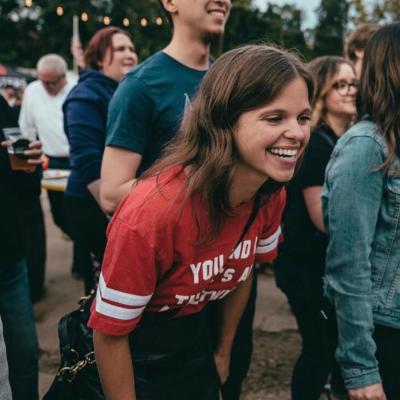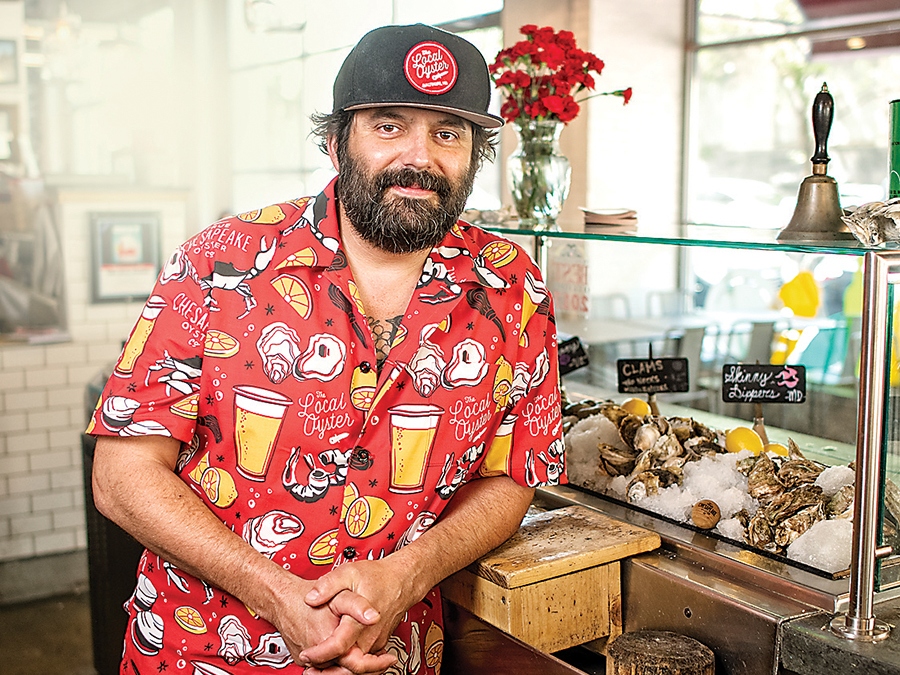
I can say with certainty: I came to Baltimore because of The Local Oyster.
The first time I met Nick Schauman was a warm July night in 2013. He was standing on the corner of West 23rd Street and Hampden Avenue in Remington. Inside a small white rowhome, the recently opened W.C. Harlan was buzzing with the clink of craft cocktails and conversation. And outside on the sidewalk, beneath a tailgate tent, before a plastic table and Maryland flag, there he stood, bouncing between mounds of ice and oysters, an equally bustling one-man show.
I can’t recall if he was wearing his trademark Orioles baseball cap or some sort of Hawaiian button-up—knowing Nick, it was probably both. But I do remember that slight Bawlmer accent and undeniably goofy charm as he unhinged seafood shells, tossed up last touches of lemon, and Frisbeed out paper plates to customers like some diner line cook, drawing in even the most seafood-wary of passersby.
That evening, Nick shucked me—an Eastern Shore native, of all people—my very first oyster outside of an R month. He explained that, thanks to advancements in aquaculture, aka seafood farming, and the advent of refrigeration, the old adage about which months were oyster-friendly was now antiquated. And I was instantly hooked.
The following day, I went home—back then, it was to New York City—and spent the next dozen lunch breaks nose-deep in research. Within a few weeks, I pitched my very first story to Baltimore magazine: a roundup of local oysters, no less. I moved back to Maryland a month later. And I’ve been here ever since.
All thanks to The Local Oyster.
I share this because, on Monday afternoon, Nick posted a video on Instagram in which he emotionally announced that The L.O. as we know it would be coming to an end. A decade in, his seafood business had grown to include two brick-and-mortar restaurants, including a flagship Mount Vernon Marketplace stall, as well as a second location in Locust Point, which opened late last year. Both will close their doors this upcoming Saturday, November 11, though luckily the business will still live on, through their popular pop-up events and catering.
Like so many Baltimoreans, I was immediately heartbroken by the news. The details of the closures have been vague, but they don’t matter. Lately, it seems like a lot of our longtime bars and restaurants have shuttered (R.I.P. Bertha’s), be it due changing neighborhoods, or aging owners (O.G. DiPasquale’s forever), or aftershocks of the coronavirus pandemic (which seems to be the case here, per the Banner). And with them goes a piece of our city’s character, even its soul.
By the next morning, over a thousand comments had poured in, and they all seemed to echo the same sentiment: Sure, we will miss that fuchsia mignonette, and the madness of the Mardi Gras parties, and a seat at the Mount Vernon bar for a well-poured pint of Baltimore-made beer to wash down our Skinny Dippers. But this one felt personal.
We are lucky to have a food scene that ride-or-dies for Baltimore, and it’s safe to say that few have rooted for it harder than Nick and The Local Oyster. After launching that roving raw bar, the Baltimore County native quickly garnered a loyal following for his everyone-is-welcome-here approach to seafood. With business partner Patrick Hudson, of the True Chesapeake oyster farm, he opened those two fast-casual restaurants, which became known not only for their namesake half-shells, but decadent shrimp-salad sandwiches, colossal crabcakes, and sky-high soft-shells, with bags of Utz and Union Craft drafts always on offer. In 2019, they also joined chef Zack Mills to open True Chesapeake Oyster Co., a high-end spot in Hampden’s Whitehall Mill, which will remain open.
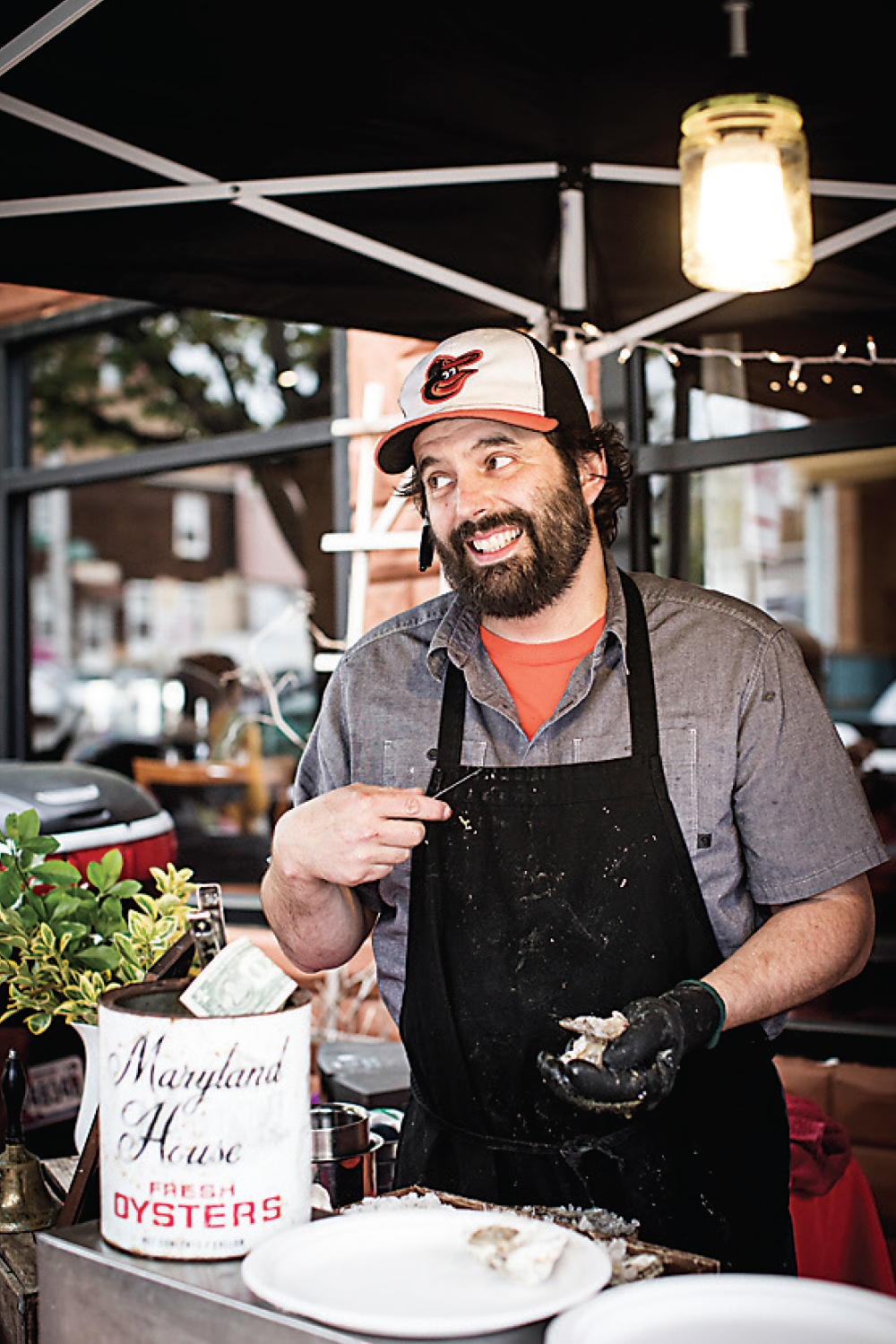
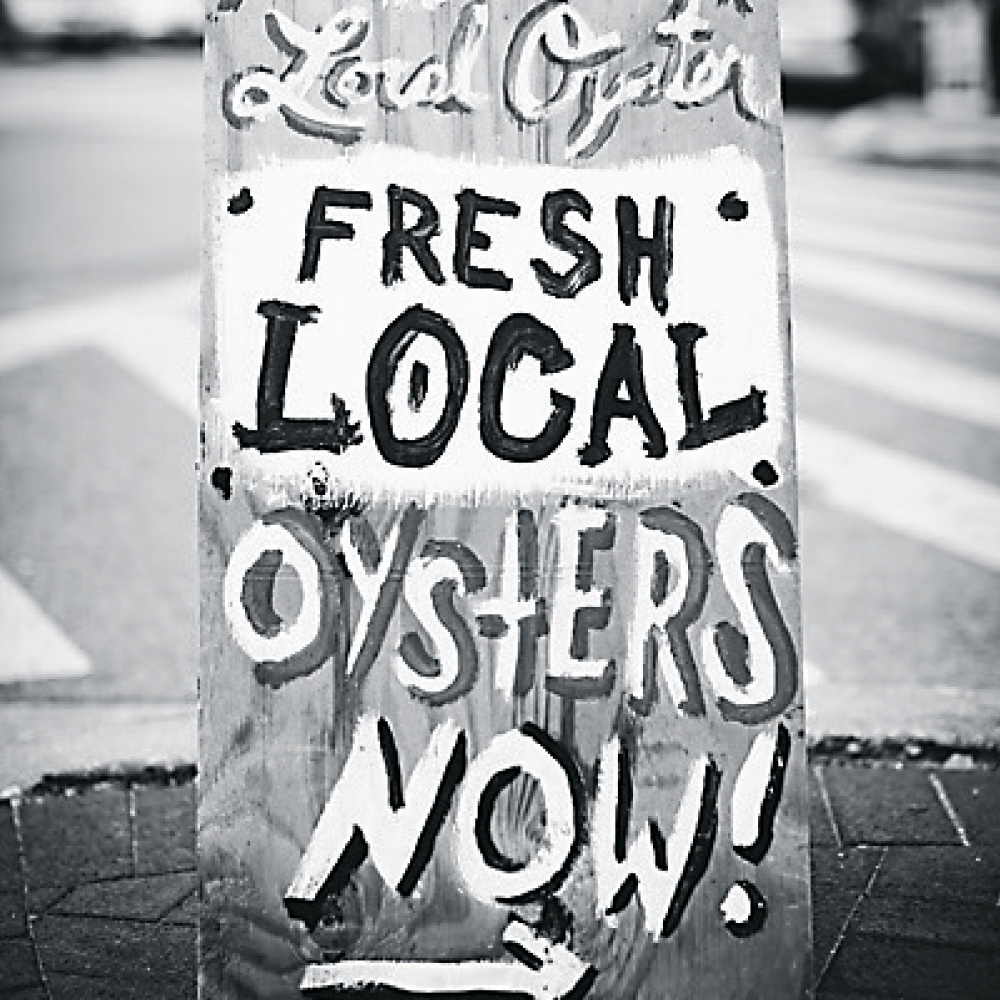
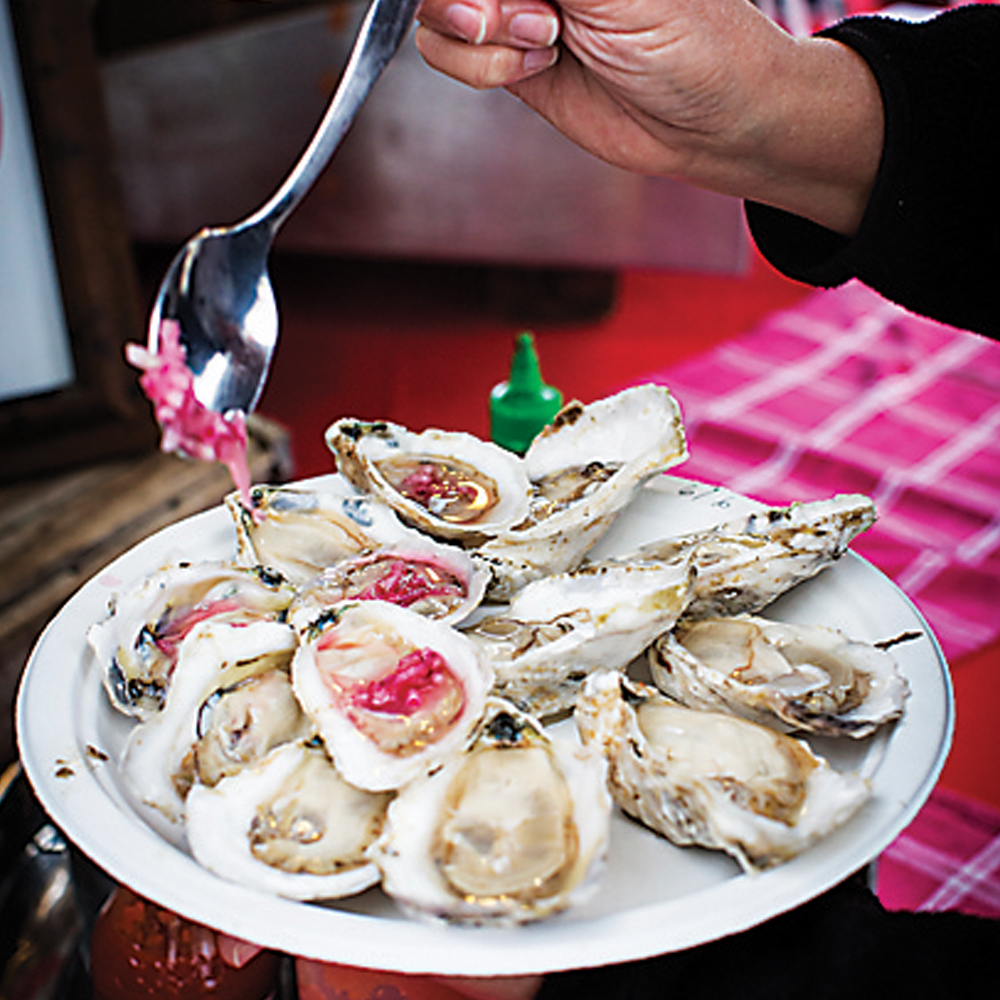
And all the while, Nick and his merry band of shuckers still rambled about the city, from First Thursdays to Charm City Bluegrass to any fundraiser for a good cause, be it the Maryland Food Bank, St. Jude’s Children’s Hospital, or Chesapeake Bay Foundation. Notably, after the onset of COVID, they teamed up with the Ed Reed Foundation to distribute donated groceries to tens of thousands of Baltimoreans in need.
“A lot of people don’t have the opportunity to go to an oyster house, so that’s what I’m trying to do—bring that experience to the public—and make a connection between the two,” Nick told us back in 2016, having grown up eating oysters at Lexington Market and buying bushels of crabs from waterman’s work trucks off Pulaski Highway. Needless to say, he’s stuck to his word.
If I want an out-of-towner to feel the warmth of this city? I’d take them to The Local Oyster. The Mount Vernon bar has been a respite for all walks of Baltimore—one of the rare spaces that defies the city’s deeply entrenched divides to bring us together over the Orioles, Ravens, or 75-cent Natty Bohs. If you’re lucky, you’ll run into Nick there, who, on his first greet or fiftieth, makes you feel like a long-lost friend.
Maybe that’s what we’ll mourn the most, even as the company carries on: knowing where we could find The Local Oyster, and often enough its synonymous owner, on any given night—a familiar face in an ever-changing, increasingly uncertain world. What does it mean for our underdog city when a homogeny of insert-any-city-here spaces continue to crop up while its most authentic—its old faithful neighborhood bars and restaurants—can’t survive? These are the places that remind us of who we are.
Nick’s excitement—for Baltimore, for the Chesapeake Bay, for its homegrown seafood, which holds so much potential to bring us together and bolster this place—it rubs off on you. (So much so that, a few years ago, wrists be damned, I even found myself shucking alongside him on The Avenue in Hampden.)
With his help, I, like many others, have learned that Baltimore was built on those small but mighty bivalves. Back in the 1800s, we were actually known as Oyster City—our wharves filled with shell-stacked sailing vessels, our harbor surrounded by shucking houses that sent our famous seafood out to the insatiable throngs across America. It was a bona fide booming industry here, until it wasn’t, with the 20th century supplanting oysters with our now-iconic crabs. A raw-bar resurgence came in earnest by the mid-2010s, and while still second-fiddle, oysters are now so ubiquitous, it’s hard to remember what an unusual sight Nick was back in the day—setting up shop and spreading the gospel of local oysters on any old street corner of Baltimore.
Today, from white-tablecloth dining rooms to corner dive bars, we slurp down half-shells with the gusto of H.L. Mencken again, who once referred to our Bay’s bivalves as “a delirium of joy!” Which is the feeling you get from Nick and The Local Oyster.
Restaurants are ephemeral. None stay open forever. We all know this, of course. But “When one door closes, an oyster opens,” wrote one comment on Instagram. After all, events and catering are The L.O.’s original heartbeat—out in the midst of its dear city—with many folks sure to follow them wherever they go.
And if that happens to mean a table outside of W.C. Harlan on a hot Baltimore summer night—or any time, any place, really—we’ll see you there.
